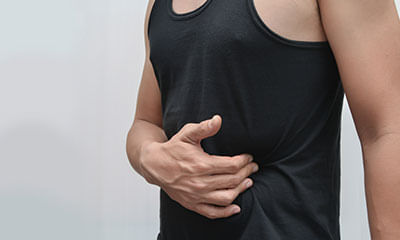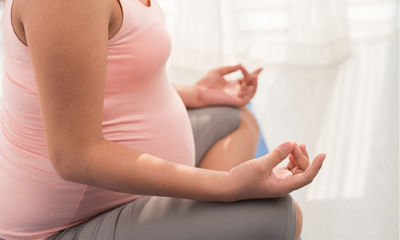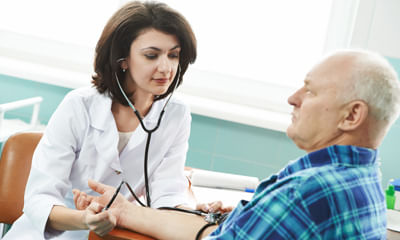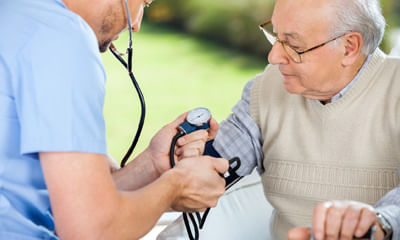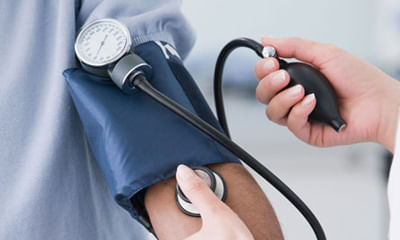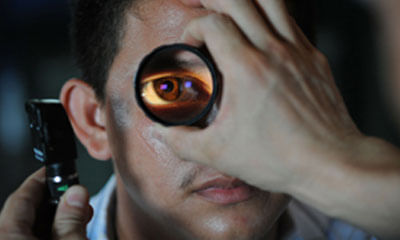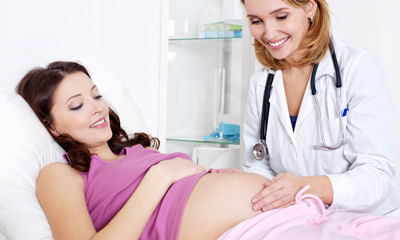Abnormal Renal Function
Hi, I have a pain in my kidney (both sides) and the pain spreads like in front of the kidney and it moves to backside of ...
Ask Free Question
Kidney pain and back pain can be difficult to distinguish, but kidney pain is usually deeper and higher in the and back located under the ribs while the muscle pain with common back injury tends to be lower in the back. Causes of kidney pain are mainly urinary tract infections and kidney stones. Kidney pain definition and facts •the function and purpose of the kidneys are to remove excess fluid and waste products from the body. •the kidneys are organs that are located in the upper abdominal area against the back muscles on both the left and right side of the body. •kidney pain and back pain can be difficult to distinguish, but kidney pain is usually deeper and higher in the and back located under the ribs while the muscle pain with common back injury tends to be lower in the back. •causes of kidney pain are mainly urinary tract infections and kidney stones. However, there are many other causes of kidney pain, including penetrating and blunt traumathat can result in a "lacerated kidney. •if a woman is pregnant and has kidney pain, she should contact her doctor. •symptoms of kidney pain may include ofever, opainful urination, oflank pain, onausea, ovomiting. •kidney pain can be on the left, right, or both sides. •causes of kidney pain are diagnosed with the patient's history, physical examination, and lab tests, including blood, pregnancy, and urine tests. A ct scan or mri of the abdomen and pelvis may be ordered. •treatment for the cause of kidney pain depends upon the underlying cause, but in general, ibuprofen (motrin), ketorolac (toradol), and/or acetaminophen (tylenol) are used for pain. Antibiotics are usually required if the underlying cause is bacterial infection. •some people can pass a kidney stone spontaneously that resolves kidney pain; however, other people may need surgery. •kidney pain can be prevented by avoiding those situations that are the underlying causes of kidney infection and/or damage. •the prognosis for someone with kidney pain depends upon the cause, and the majority of patients can have a good outcome when treated quickly and appropriately. Kidney stone symptoms kidney stones form within the kidney or urinary tract. Kidney stones that do not produce symptoms are called "silent" stones. When symptoms do occur, they usually come on suddenly and include excruciating cramping pain in the low back and/or abdomen, side, or groin. Changing body positions does not relive the pain. What are symptoms and signs are associated with kidney pain? Symptoms associated with kidney pain (also termed renal or flank pain) are discomfort (acute or chronic), aches, or sharp pain that occurs in the back between approximately the lowest rib and the buttock. Depending on the cause of the pain, it may radiate down the flank to the groin or toward the abdominal area. Some individuals may develop symptoms and signs such as: •fever •painful urination (dysuria) •blood in the urine •nausea •vomiting •dizziness •constipation or diarrhea •rash •fatigue •chills other signs and symptoms that may occur if the kidney function is increasingly compromised are a •metallic taste in the mouth, •bad breath, •swelling and shortness of breath. Depending on the underlying cause, kidney pain may occur on the left or right side. Sometimes it can occur on both sides of the back; traumatic kidney injury (kidney laceration) may cause the above symptoms, but mild damage may initially have no symptoms. Severe kidney lacerations can cause abnormal blood pressure and pulse, and shock. Kidney pain itself is a symptom that may happen due to problems or diseases of the kidney or its associated structures, including the ureters or bladder. However, other diseases may mimic kidney pain, but are not actually due to the kidneys, for example, •muscle strains in the back, •spinal problems (fracture, abscesses), •rib pain, •pleuritis, •radiculitis, •retroperitoneal fibrosis, •shingles, •aortic abdominal aneurysm, •gynecological problems, and •many other causes. Although kidney pain often occurs on one side of the back, it can occur on both sides at the same time and may radiate toward the abdomen or groin. Pain that occurs suddenly, is sharp, severe, and may increase and decrease in waves is often due kidney stones in the ureters of the kidneys. Pain caused by kidney stones is termed renal colic.
Hello sir, I have a problem of frequent urination. I generally urinate around 15 times a day. Whenever I drink water, th ...
Ask Free Question
Well frequent urination have some reason like diabetes, diabetes insipidus, urine infection, renal tubular malfunction, renal failure etc, motor function abnormalities etc, So this has to be diagnosed, by proper homoeopathic treatment it is curable.
My wife is 35 weeks pregnant and have been experiencing itching across the body and soles of legs and palms as well for ...
Ask Free Question
Itching without rash could be due to rise in bile acid but late onset itching with rash in could be solely a skin condition (specific in pregnancy) Itching in palm and sole may be seen in drug allergy too. Besides liver and renal function test please review the above factor too. Thyroid abnormalities add up to skin dryness so moisturising twice daily would be helpful too.
Hi I am 28 year old man, unmarried.I am having Hypertension and been taking medicines for the last 5 years. Now I am on ...
Ask Free Question
Yes you can get married. All you need is to understand hypertension. Hi Normal range of blood pressure is between 90/60 to 140/90, anything above or below is is abnormal. Many factors can affect blood pressure, including: 1) The amount of water and salt you have in your body 2) The condition of your kidneys, nervous system, or blood vessels 3) Your hormone levels You are more likely to be told your blood pressure is too high as you get older. This is because your blood vessels become stiffer as you age. When that happens, your blood pressure goes up. High blood pressure increases your chance of having a stroke, heart attack, heart failure, kidney disease, or early death. DASH stands for Dietary Approaches to Stop Hypertension. It is an eating plan that is based on research studies sponsored by the National Heart, Lung, and Blood Institute (NHLBI). These studies showed that DASH lowers high blood pressure and improves levels of cholesterol. This reduces your risk of getting heart disease. The DASH Diet Emphasizes vegetables, fruits, and fat-free or low-fat dairy products. Includes whole grains, fish, poultry, beans, seeds, nuts, and vegetable oils. Limits sodium, sweets, sugary beverages, and red meats. Along with DASH, other lifestyle changes can help lower your blood pressure. They include staying at a healthy weight, exercising, and not smoking. I read your query, by the information I have in hand my advice to you would be 1) Keep a BP daily record for at least one week 2) Basic tests should be one to rule out cardiac / kidney issues 3) unless any recent evaluation has been done I would advice these test ECG ECHO Lipid Profile TSH KFT Renal doppler Get back to me with a detailed history and old / new records for a better individualized advice.
My son 24 years has BP 150/93 TO 160/100 since more than 1 yr. With medication. Presently he is having the following med ...
Ask Free Question
Hi Normal range of blood pressure is between 90/60 to 140/90, anything above or below is is abnormal. Many factors can affect blood pressure, including: 1) The amount of water and salt you have in your body 2) The condition of your kidneys, nervous system, or blood vessels 3) Your hormone levels You are more likely to be told your blood pressure is too high as you get older. This is because your blood vessels become stiffer as you age. When that happens, your blood pressure goes up. High blood pressure increases your chance of having a stroke, heart attack, heart failure, kidney disease, or early death. DASH stands for Dietary Approaches to Stop Hypertension. It is an eating plan that is based on research studies sponsored by the National Heart, Lung, and Blood Institute (NHLBI). These studies showed that DASH lowers high blood pressure and improves levels of cholesterol. This reduces your risk of getting heart disease. The DASH Diet Emphasizes vegetables, fruits, and fat-free or low-fat dairy products. Includes whole grains, fish, poultry, beans, seeds, nuts, and vegetable oils. Limits sodium, sweets, sugary beverages, and red meats. Along with DASH, other lifestyle changes can help lower your blood pressure. They include staying at a healthy weight, exercising, and not smoking. I read your query, by the information I have in hand my advice to you would be 1) Keep a BP daily record for at least one week 2) Basic tests should be one to rule out cardiac / kidney issues 3) unless any recent evaluation has been done I would advice these test Lipid Profile TSH KFT Renal doppler Get back to me with a detailed history and old / new records for a better individualized advice.
Dear Doctor, I am a 60 years old male and still working. I used to do regular exercises 5 days a week for 40-60 minutes ...
Ask Free Question
Mr. M lybrate-user, thanks for the query. I have gone through the details given. Most of the parameters mentioned look good or normal. However, following are my comments: 1) Blood glucose levels are suggestive of pre-diabetic state. Which a signal to adapt a modified lifestyle, so as to be able to prevent progression to diabetes. 2) Cholesterol is slightly high, exercise and diet control can help in improving the situation. 3) Presence of a cyst in liver also in kidney need to be followed up with your physician. It may not cause any problem right away, but follow the doctor's advise. 4) Heart function seems to be fine, nothing to worry. Thanks.
Dear Sir, After seeing a diastolic bp of 85-95 over few months, I went to take a ecg as a precautionary. No pain or disc ...
Ask Free Question
Hi, Welcome. Your ECG seems ok, but seeing the actual ECG is more important. As you said, your diastolic bp is 85-95, which is high for your age. So, monitor your bp regularly. I'll also advise you for certain tests - Kidney function test, thyroid profile, Lipid profile, Renal doppler & 2D Echo to rule out any possible causes of high bp. Come back if you need further help. Thanks.
Im 21 years old and I got my blood pressure checked 2 times and it showed 130 over 90 the doctor scares me saying that I ...
Ask Free Question
No go for walk cut down in salt.
From last 3-4 days I have night sweat, abnormal heart beat, not able to eat or drink anything, back pain, shaking of bod ...
Ask Free Question
Please visit a general physician especially since you r complaining of abnormal heart beat. The redness in eyes will go. Once the fever subsides. But yes. .do have a routine eye checkup done especially if you have not had one in last 2 years.
I am pregnant and I did ultrasound and doctor told me that there is a small swelling in baby's right kidney. please tell ...
Ask Free Question
Antenatal (before birth) hydronephrosis (fluid-filled enlargement of the kidney) can be detected in a fetus by ultrasound as early as the first trimester of a pregnancy. Depending upon the abnormality, ultrasound imaging may be needed throughout pregnancy and after a baby is born. Antenatal (before birth) hydronephrosis (fluid-filled enlargement of the kidney) can be detected in a fetus by ultrasound as early as the first trimester of a pregnancy. During pregnancy, this condition is identified in 1 percent of males and 0.5 percent of females. Typically, this condition is not associated with abnormalities in other organ systems. Prenatal intervention is almost never required, and amniotic fluid is usually normal. Depending upon the abnormality, ultrasound imaging may be needed throughout pregnancy and after a baby is born. In most cases, this diagnosis does not affect when, where or how a baby is delivered. Surgery is required in a small percentage of children during infancy and childhood. What causes antenatal hydronephrosis? This is the most commonly detected condition on prenatal imaging. This prenatal ultrasound image shows minimal renal pelvic dilation of less than 5 mm in both kidneys. The most common site is where the renal pelvis joins the ureter (the duct by which urine passes from the kidney to the bladder). Ureteropelvic junction obstruction (UPJ) is estimated to be present in one in 1,000 infants. Obstruction may also occur where the ureter joins the bladder, known as ureterovesical junction obstruction (UVJ) or megaureter. The incidence of this condition is one in 2,500 infants and more than 90 percent of these cases improve without surgery. As result, the kidney cannot produce urine and does not develop normally. The kidney has no function. Fortunately, this usually only affects one kidney. Given that the other kidney is normal (and compensates for the absence of another functioning kidney), infants with a multicystic kidney are usually born with entirely normal overall kidney function. Testing and treatment during pregnancy In nearly all instances of antenatal hydronephrosis, ultrasound monitoring is all that is necessary. For most cases, a pregnancy is not affected, and a normal delivery can be performed. In the rare fetus with severe obstruction of both kidneys and insufficient amniotic fluid, prenatal intervention to relieve the obstruction is a consideration. Evaluation for possible intervention requires multiple specialties such as neonatology, pediatric urology and maternal-fetal medicine. Testing and treatment following birth Your baby may be placed on a low-dose, once-a-day antibiotic to prevent urinary tract infection. Since an ultrasound performed in the first few days after your baby is born may underestimate the degree of this condition, the first ultrasound is usually conducted following discharge from the hospital. However, there are circumstances when an ultrasound will be conducted prior to your babyâs discharge. This may be necessary because of: bilateral dilation decreased amniotic fluid complications following birth uncertainty regarding the ultrasound diagnosis.

